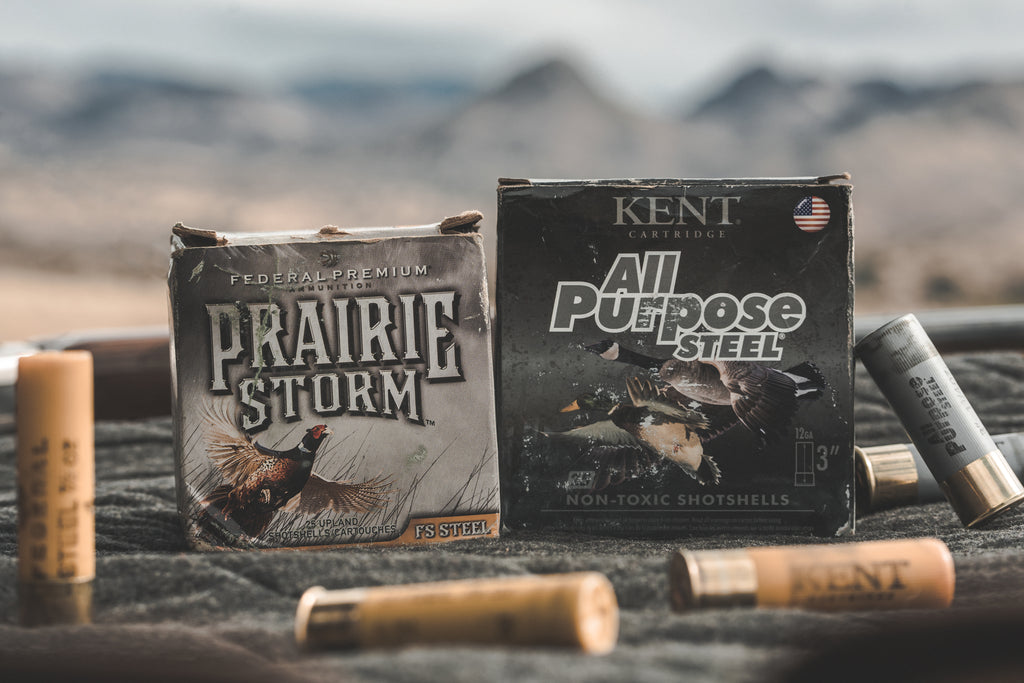All About Non-Toxic Shot Shells

A quick internet search will tell you everything you need to know about lead and non-toxic shotgun shells, except what you actually want to know, it’s performance. I am almost disgusted by the search results and completely biased opinions (not data) that are at the top. This includes one “hunter” who was debating throwing away the pheasants in his freezer because they had been shot with lead-shot.
The discussion about whether it is safe to eat animals shot with lead bullets and shot has been beaten to death all over the internet. Let’s look at this from a strictly performance-based approach. That means no politics or jabs at one or the other. To be completely transparent, I hunt with both lead and non-toxic shot.

What is Non-toxic Shot
Non-toxic shot, also known as “non-tox” is an alternative to the lead shot traditionally used in shotgun shells. Lead has been proven to be very toxic to birds, including ducks, when ingested. Scientists and Biologists have identified this to be more of a problem around waterways where people hunt waterfowl. Waterfowl hunters have now been required to use non-toxic shot for over 30 years in the United States. There are a few places that require upland and turkey hunters to use non-toxic shot as well.
Types of Non-Toxic Shot Examined
Pure Lead Shot
Before we dive into all of the non-toxic shot options, let’s take a look at pure lead shot and why people still use it. Lead has been loaded in shotguns since the early days of the front stuffers and fowlers that helped put food on the table across the globe. Partly because it was widely available, partly because it did the job very well. Lead has become the standard by which all others are judged. Performance is pretty good, it is very dense, and has adequate knockdown power. Above all other things, it is by far the cheapest.

Steel Shot
Most people are familiar with steel shot and its use for waterfowl. It is by far the most popular non-toxic shot on the market today. I promise you this isn’t because of its performance. The popularity of steel shot has to do with its affordability. It is the most affordable type of non-toxic shot on the market. Its density is somewhat pathetic compared to lead, dropping velocities and losing its effectiveness at longer ranges very quickly. Due to its hardness, it is also not safe for many older shotguns. Conversely, even in modern shotguns, there are some tighter chokes that are not safe for steel shots. As you can see, Steel shot has its limitations. However, it is very effective when used in the right scenario. For sub-30 yard shots on ducks and geese, it is deadly.

Tungsten Shot
If you’ve never heard of tungsten shot you are in for a real treat. Plain and simple It is the densest material on the market. Your efficacy at distance increases significantly, making the performance of lead look slightly pathetic. It is another USFWS approved Non-toxic shot option. So what’s the catch? Why isn’t everyone using it? It is extremely expensive. To buy a 5-rd box of Hevi-shot pure tungsten turkey loads you're going to spend around $80.00. Once tungsten hit the market shotgun shell makers took notice. They looked at ways to expand their market and make it more affordable.
Tungsten Alloy Shot
With the price of tungsten being borderline astronomical, tungsten alloys were looked at as the solution. These alloys were not as dense as pure tungsten, but they are still above lead as far as density is concerned. They performed really well and people took notice.
Hevi-Shot
When Hevi-shot hit the market in the 1990s it took the U.S. by storm. It was a tungsten alloy that was denser than lead, something that not many non-tox options can claim. My family has used it turkey hunting for many years and can vouch for its hard-hitting pellets. Hevi-shot has changed over the years trying to keep it affordable, but the general consensus is that you can count on anything with the Hevi-shot brand to do its job very well. Today they claim that because of its density, you can drop three shot sizes when comparing it to steel shot, giving you a lot more coverage in your patterns. While this can be considered under the tungsten category, they are worth being mentioned as a separate category due to their innovation in the shot world. Most of their products on the market, aside from their Hevi-18 turkey loads are tungsten alloy.

Bismuth Shot
Bismuth has become very popular as a non-tox option. It is the softest shot out there, being much softer than most barrel steels. This makes it safe for old side by side shotguns that can be wrecked with steel shot. Bismuth tends to hit a sweet spot in the shot market and checks a lot of boxes. It isn’t as cheap as lead or steel, but it isn’t as much as tungsten. It works in any shotgun, and it has a reputation for holding great patterns.
The downside is that it tends to be brittle and break on impact. While this isn’t a huge issue in my opinion, some companies have gotten around that by plating it.

Shot Densities
Now that you have a brief overview, let's compare the performance of each. In the last article, I did about shot size, we touched on the importance of density. The heavier the projectile the longer it retains energy and killing power. Density in shot is commonly measured in grams per cubic centimeter. Below is a chart comparing the different densities and weights of a few shot sizes.
|
Type of Shot |
Density grams/cc |
Grains Per Pellet |
||
|
#5 |
#6 |
#8 |
||
|
Tungsten TSS Shot |
18.2 |
3.9 |
3.3 |
1.7 |
|
Tungsten Alloy |
12.0 |
2.6 |
2.2 |
1.5 |
|
Pure Lead |
11.3 |
2.4 |
2.0 |
1.3 |
|
Bismuth |
9.6 |
2.1 |
1.7 |
1.0 |
|
Steel |
7.8 |
1.8 |
1.4 |
0.7 |
This chart is organized in order from most dense to least dense. The tungsten alloy numbers are from one of the older Hevi-Shot products and can vary depending on what alloy the company is using. Most tungsten alloys will fall in between pure lead and the TSS Shot.
Looking at this performance chart, you can get a good idea of what to expect out of each type of shot. Bismuth has taken the upland and waterfowl community by storm, while not quite as dense as lead, it is a large improvement over steel.

These densities will tell you a lot about how your shot pattern will perform at distance. I can’t say enough good things about tungsten and its alloys. You are simply getting a better-performing pellet. If you reload shotshells you can really do some amazing things with these alternative non-tox shots. With tungsten’s high densities you can drop shot sizes for turkey and get a deadly dense pattern out of your shotgun. It also makes sub gauges such as the 28 gauge a force to be reckoned with in the turkey woods.
Price Comparison
Below I made a small chart to help you compare the price of each option. While you may be able to find them cheaper, this gives you a good idea. I chose to use the Federal target loads for the pure lead category to give you an idea of how cheap lead can be. Good quality lead upland loads will run around $20-$30 a box.
|
Type of Shot |
Price per 25 rd Box |
Price Per |
|
|
Round |
Product |
||
|
Tungsten TSS Shot |
$329.95 |
$13.20 |
Federal TSS |
|
Tungsten Alloy |
$85.99 |
$3.44 |
Hevi-Shot, Hevi XII |
|
Pure Lead |
$10.99 |
$0.44 |
Federal Target |
|
Bismuth |
$76.99 |
$3.08 |
Federal Bismuth |
|
Steel |
$35.99 |
$1.44 |
Federal Black Cloud |
Get Out and Test it!
All of these shot types are deadly in the right scenario. It is important to go into the uplands or duck blind educated about what you can expect out of your shotgun. All of this looks good on paper but the best way to make a decision is to get out and test it. Test different ranges by patterning your shotgun and find out what your patterns look like with different chokes. Although steel performs the worst out of the ones mentioned here, it might be absolutely deadly in your shotgun.
An approved list of non-toxic shot options from the USFWS.
https://www.fws.gov/birds/bird-enthusiasts/hunting/nontoxic.php
Written by Kurtis Martonik
